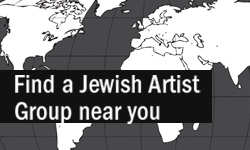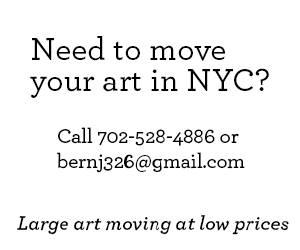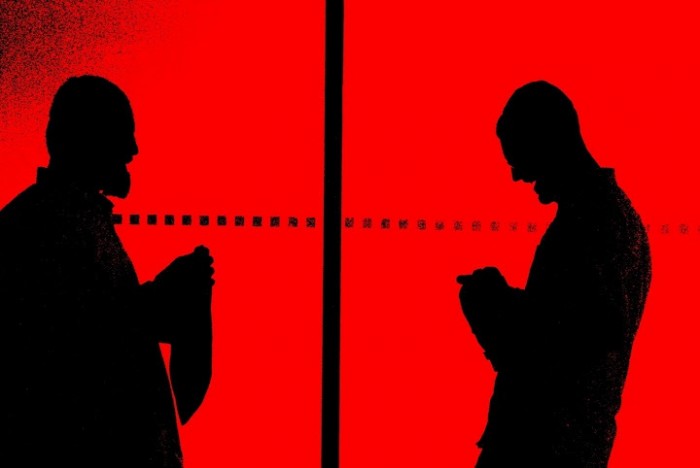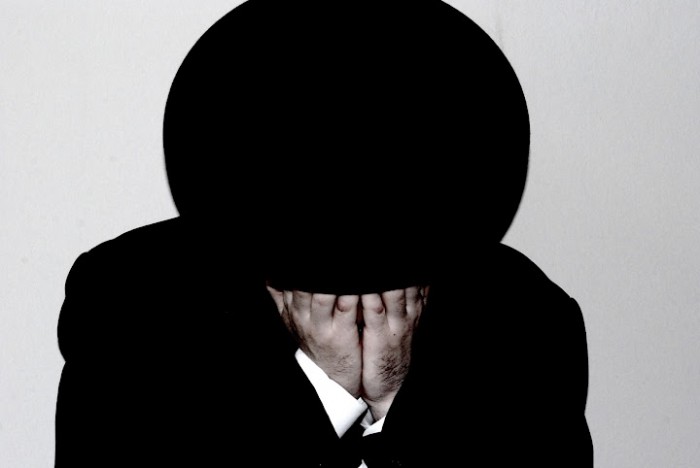Freedom and Choice, the work of Efraim Moskovics
10 Apr2012
By Jessica White, Vienna
Efraim Moskovics is a photographer who challenges form and structure in a peaceful and non-threatening way. He takes familiar rituals and traditions in Judaism, to look at them in abstraction, from a different viewpoint, one that is contemporary and full of rich influences from literature, film and contemporary art. In doing so, he reveals what is within a community, any community, is rich and diverse, with borders that are defined and redefined on a regular basis; it only needs the veil of prejudice to be lifted.
Efraim’s photography brings out historical aspects of faith with modernism. This approach experiments with form and draws attention to processes and abstraction. His work is self conscious and challenges, as Adorno has characterized, conventional surface coherence and appearance of harmony. Yet as Einstein said, as we look at Efraim’s photography it is possible from “Discord to find harmonyâ€. Efraim’s photography is subtle and plays with light to achieve this abstraction, this awakens our interest to see the familiar in an unfamiliar wa y opening contemporary perceptions.
The Airport Series
In this series, people leaving Jerusalem were taken from behind a screen at the airport. There was intention to have a strong contrast between darkness and light. Silhouettes emphasise this intensity with nothing in between. Perhaps this contrast is a little startling, unnerving, almost too much. This ardor of contraposition between darkness and light allude to Efraim’s religious influences. Often in the greatest darkness there is light; in suffering there is beauty and in contrast, where there is light there can be seeds of downfall. Film has been a steady influence throughout Efraim’s photographic development. Posters from this art form are often arresting, striking and bold in approach. They capture your attention in an instant and yet, done well, they deliver a narrative through careful composition. In this series, the striking colour against black silhouettes, infers towards these graphic representations of film.
Furthermore, Efraim’s hope is to popularise the photographic image so that it will reach a mass audience, rather than a single group or an elite. Cross-referencing with other art forms in this way, echos Andy Warhol and his experiments with a variety of media. Efraim, like Andy Warhol is interested in the cultural and aesthetic associations and through his work
questioning structural boundaries and exploring the merging of mediums.
Hat and Graffiti Series
In these series geometrical shapes appear that are created between the stark contrasts. For instance, the white wall and ritual hat that are at once traditional and contemporary. There is a witty aspect to these photographs that seem to b e
influenced by surrealism, in particular Rene Margrit, with his iconic black hat paintings.
You can almost hear Margrit infer to Efraim’s photographs as he says: “It is a union that suggests the essential mystery of the world. Art for me is not an end in itself, but a Freedom and Choice means of evoking that mystery. â€â€” René Magritte on putting seemingly unrelated objects together in juxtaposition Magritte’s work frequently displays
a col lect ion of ordinary objects in an unusual context, giving new meanings to familiar things. Similarly, in Efraims’s work, this is quite true for both this and the Graffiti series. Seemingly everyday rituals and objects are seen in a new way. Is the man davening (praying) or inspecting a white gallery wall for a photograph to hang for an exhibition giving a
self-reflexive quality? It is the former, yet this juxtaposition reveals ambiguity and the precarious balance and witty allusion to both. Similarly in the Graffiti Series, is this a man going about his daily prayer or is he experimenting with street art? This juxtaposition of daily objects and actions in an unusual way is not to make these subjects superficial or to ridicule, quite the opposite it is, like Magritte, to convey poetic imagery. They evoke mystery and you may ask when you see these pictures, “What does this mean� but like mystery itself you may have to keep asking this question because these photographs infer to the unknowable. So from art to mysticism, Efraim, among other modernist artists revealed the connections between the two. Efraim sees that an artist and a spiritual leader have to strive for the intangible and so they have communicate grand visions.
“When a person is spiritual they may want other people to see what they see and to feel what they are feeling you feel like there should be as many people as possible who feel the same way as you do. You are trying to strike a cord with people`s emotions, not to necessarily feel the same way as you do, but more to trigger a thought and emotion. An artist can be similar to a Rabbi, he has tremendous power of inspiring people, he has to speak the people’s language.
It is not enough that the Rabbi feels a certain way but that he has to bring it across in a way that speaks to them that evokes feelings in the people. If he doesn`t move his audience then he has failed and in that way the artist and Rabbi are very similar. In the abstract photographs, the intention was on not having the face shown, there are many reasons for this. The photographs are more open to interpretation if you don´t see the face. In religion, sometimes you are in danger of loosing your individuality, however, this is not necessarily a bad thing, because it enables people to gain a sense of unity with one another.†(E.Moskovics; 2011)
Portraits
The face and eyes are prominent in his portraits, so that seemingly small, seemingly ‘normal’ everyday or face in the crowd becomes something special, valuable and unique. He captures what is often overlooked by others with a keen and inquisitive eye. His portraits reveal melancholy and brings from their eyes to ours. After many conversations with Efraim on the subject, it seems as if he wants to draw our attention to those aspects of life that we were aware of as a child and yet, into adulthood we take for granted. If we look a bit closer to those seemingly unnoticeable facets of life, those that are left discarded, there we may find the greatest beauty of all.
What runs through Efraim’s photography is beauty in difficulty. His photographs explore the limitations that people often find themselves in. They are often people who have grand visions and yet are confined by their circumstances in some way. His photography explores how can this beauty can survive, with often unusual juxtapositions in limiting circumstances. Efraim takes familiar rituals and traditions and looks at them in abstraction.
Through this abstraction, he enables us as viewers to become participants in his formation process, so he invites us through his photography to challenge form and structure in a peaceful and nonthreatening way. This enables a certain freedom. A freedom from constraints, and an ability to look beyond ritualistic elements in their context. From this alternative way of looking, we are able to understand a third interpretation; an interpretation that is fresh and exploring the boundaries of conformity. Perhaps, through this approach, new forms of understanding can come into play. There is a freedom in this voice. Such as the ritual of davening against a wall then abstracting this ritual by juxtaposing a graffitied wall. In each of his photographs, the viewer can feel a need to look at the world from a fresh perspective away from constrictions. This does not mean eradicating traditions and rituals, it means keeping and respecting, but having freedom within them.
Efraim Moskovic Biography
Originally from Austria, Efraim has lived in Vienna and Jerusalem. His photography represents religion from a modern perspective. This is unusual for someone from Efraim’s social background, as he was brought up in a family that is a Hasidic dynasty. He has always had a keen interest in the historical development of photography, literature, cinema, psychology, philosophy and theatre and so he is able to create images of yesterday in a modernist way.
Efraim’s Grandfather came to Vienna after the Second World War, after his great grandfather was killed in Auschwitz. His grandparents had been hiding in Hungary for seven years previously. Just like his personality his grandfather`s life was rather unique. Efraim`s great grandfather had been a simple poor book-binder, whereas his son was a brilliant Talmud scholar at the age of twenty and Head of a Chassidic Talmud academy (Yeshivah). After the war the Rosh Yeshivah and Hasid (Head of an Academy) who’s only language was Yiddish, founded a bank in Vienna. Efraim`s family has lived in Vienna ever since.
Efraim has been influenced by Neo-Hasidism with teachers such as Martin Buber, Abraham Joshua Heschel, Zalman Schachter-Shalomi and Arthur Green as well as Israeli poet: Chayim Nahman Bialik. Furthermore, Efraim has been influenced by Haskalah (Enlightenment) whilst simultaneously bringing forward the significance of early Hasidisim for personal spirituality and story telling through his photography. Efraim`s photographs come from the belief that human beings are too complicated and potentially great to confine or limit themselves. We are all encompassing and often the good and bad in people are entangled, so that people are not black and white. People are like their emotions, diverse and full of drama and passion. Often what you see is a transformation so that the goodness in people comes from the negative, it’s all intermingled. Efraim’s photographs try and capture both the light and the darkness in a person. This is clearly revealed through his photography that brings out historical aspects of faith with modernism.
Efraim’s combination of historical and modern approach experiments with form and draws attention to the processes and abstraction. His work is self-conscious and challenges, as Adorno has characterised, conventional surface coherence and appearance of harmony. Yet as Einstein said, as we look at Efraim`s photography it is possible from “Discord find harmonyâ€
Freedom and Choice  was previously exhibited at the Lauder Business School, Vienna Novemeber, 13, 2011. Look forward to his next exhibition coming up this July at the Anzenberger Gallery www.anzenbergergallery.com.
For more on Efraim Moskovics visit www.efraimsgallery.com
- In: Featured Artists
- Tags: Europe, Photography






